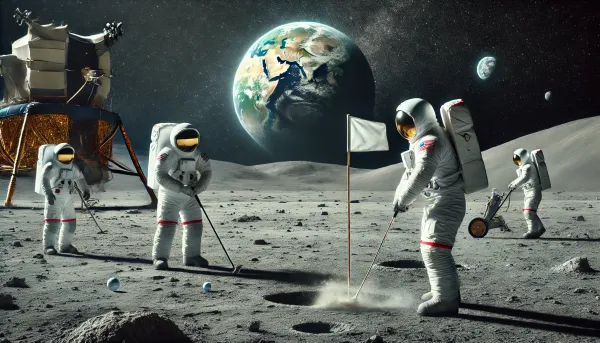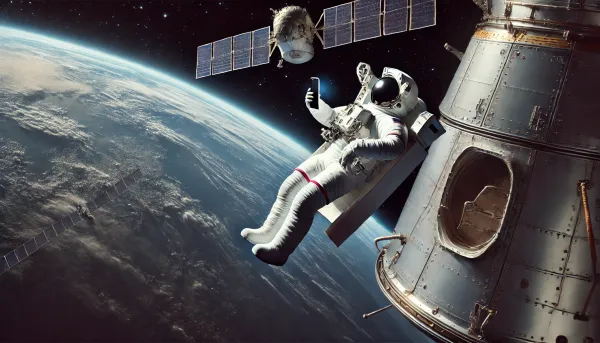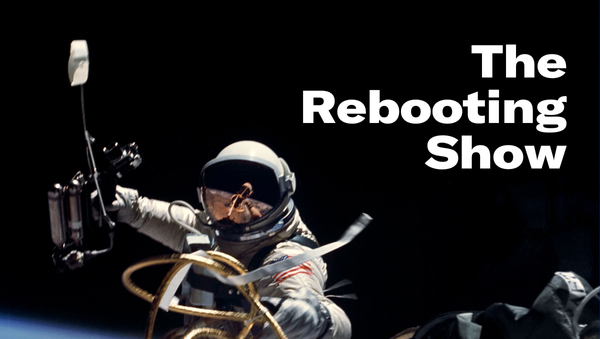Slow news
Tortoise Media is betting on less is more
Welcome to the Riviera edition of The Rebooting. Favor to ask: Please share The Rebooting with a friend or colleague who you think would find it beneficial. Big thanks to LinkedIn’s Daniel Markovits for recommending The Rebooting as one of his 10 favorite newsletters. (This will do nothing to change my belief that LinkedIn is the last good social platform.) This week:
- I spoke to Tortoise Media’s Katie Vanneck-Smith about how Tortoise is taking a slower, more considered approach to news – and why it pivoted from text to audio as a better format for its strategy.
- Early impressions from Cannes.
- Feedback on humanistic media.

Tortoise Media’s counterintuitive approach
You need to optimize to something. The scale era of digital publishing was characterized by optimizing to quantity. The analytics dashboards always told you that more is better than less, no matter the business model. The more stories you published in a day, the more likely you are to catch an algorithm to churn pageviews. In subscription models, feeding the beast was the best way, mostly, to attract and retain audiences. Of course, there’s a cost, often in terms of quality, brand consistency, differentiation and staff burnout.
Katie Vanneck-Smith, formerly president of Dow Jones, thought there must be a better way. In 2019, she co-founded Tortoise Media, a UK-based publisher dedicated to “slow news.” The problem she and her co-founders diagnosed: “The problem isn’t just fake news or junk news, because there’s a lot that’s good – it’s just that there’s so much of it, and so much of it is the same. In a hurry, partial and confusing. Too many newsrooms chasing the news, but missing the story.”
The slow approach means that Tortoise confines itself to producing one podcast episode a day, one daily newsletter (in email and audio), one multi-part series per month and one book a quarter. Katie and I discussed the Tortoise approach in an on-stage conversation at the FIPP World Congress in Cascais, Portugal. Some key takeaways:
Doing less isn’t about lowering ambitions. Katie noted that as a marketer by training she knows that “scarcity drives value, often in pricing strategies.” The added bonus is that it can focus your spending. Often publishers are trying to do so many things to satisfy so many audience segments that their costs simply get too high compared to the value they can extract with either ads or subscriptions.
A membership model is different than a subscriptions model. Tortoise is focused on closing the gap between the people making the Tortoise product and those consuming it – and supporting the Tortoise mission. This “open journalism” approach manifests itself by members being invited to daily editorial meetings. To date, Tortoise has over 50,000 paid members. “Tortoise is a membership business rather than subscriptions because we can’t compete in that ecosystem of digital publishing,” she said. One proof point: 65% of members come through referral.
Audio is still open space. 18 months in, Tortoise pivoted its strategy to be audio first. Katie said it was driven by seeing younger demographics gravitate to its podcasts but also, candidly, because breaking through with written news content was hard considering the sheer volume already in the market. The trick is moving people from listener to member. “When you listen to a podcast, the intimacy is different,” Katie said.
Find the full episode on Apple, Spotify and Anchor. Send me your feedback: bmorrissey@gmail.com

Cannes first impressions
I’m writing this newsletter from the Riviera, where I came for what must be my 10th or 11th Cannes Lions. I’m going to write more on Thursday about my impressions of the week, but an early impressions:
Anyone doubting software has eaten the world should come to Cannes. I am old enough to remember when this was still mostly an awards show that celebrated the best in advertising. Now the ad awards are mostly given lip service, as the entire town seems to be taken over by technology companies. Amazon has a sprawling compound, joining the long-term beachfront gathering sports for platforms like Pinterest, Twitter and Meta, not to mention the sprawling compound set up in the harbor by Amazon. Ad tech companies, including some I’ve honestly never even heard of, have ads everywhere. It is an expected occurrence when a quiet dinner in the old town is interrupted by trolley car emblazoned with the logos of an ad network. Credit to Snap for having the classiest venue: a collaboration with Vogue and designer brands for a virtual fitting room experience at an art gallery.
Forget live events being dead. I don’t know what the delegate numbers will show, but those can also be wonky because many people come without buying passes to the actual conference itself. But judging from how bustling the Croisette is and restaurants, particularly for a Monday, I can’t see how big, important gatherings will suffer too much from a remote world. In fact, I think in-person events will end up being more important to get people off Zoom.
What recession?The first rule of Cannes, like Twitter, is that very little of it corresponds to reality. Ad tech executives don’t typically spend their afternoons on yachts, sipping rosé. This year’s edition has a strong disconnect between the lavish surroundings and a war raging 1,800 miles away, not to mention raging inflation, plummeting asset prices and a shaky economic outlook. It’s good to be upbeat, but the idea that the ad industry – and the tech intermediaries that increasingly control it – will suffer the downstream effects of this reality is better left to another time. For now, the party is on.

More on humanistic media
I got some good feedback on last week’s piece about humanistic media. I recognize it was a bit out there, even at risk of coming across as naive. Some notes I got revolved around whether the entire notion of putting humans first is just putting lipstick on a pig, a mere branding vehicle. There’s something to that, of course. Building a differentiated brand is done in order to charge a premium. If you’re going to create an undifferentiated product, you need to win on efficiency. (As for why anyone would want to pay $400 for a Cucinelli t-shirt, I don’t know, but in the free market we have so many places to buy t-shirts. You can get some Amazon Essentials for $14 – and you get two.) I don’t see how you’re going to build a smaller, slower, more human media product while competing on the same terms, by the same measures, as those who are optimizing to efficiency. It would be like a small local bookshop trying to promise faster delivery than Amazon. You can try to compete in a game or choose a different game. Seems to me there’s a good case for many publishers to follow the lead of Tortoise and compete in a different game.

Thanks for reading and listening this week. If you’re on the Croisette this week, drop me a note: bmorrissey@gmail.com.





